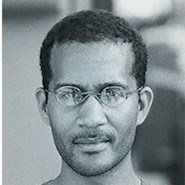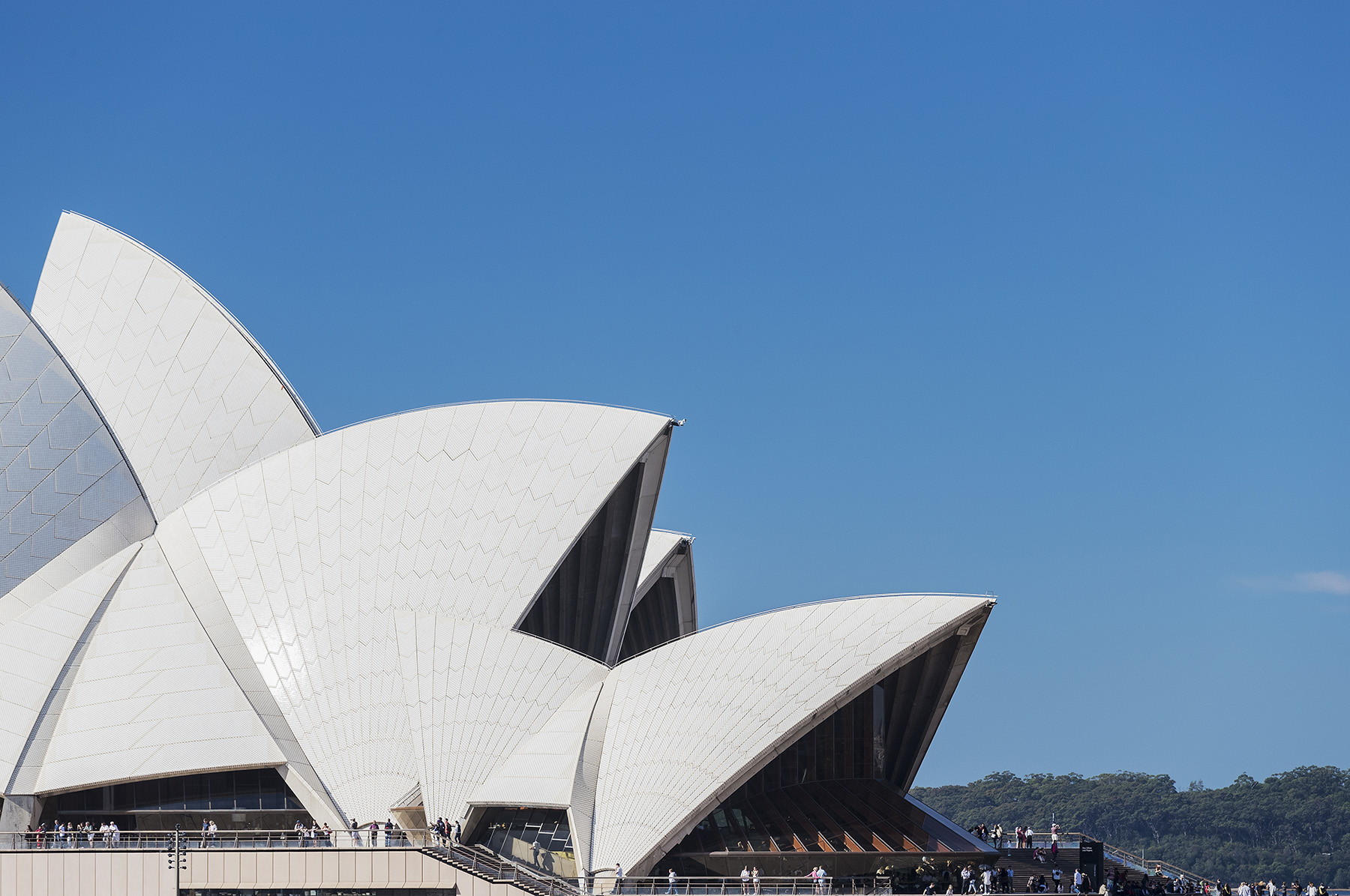
By T.R. Witcher
There are few structures on Earth that serve as the undisputed icons of their respective countries: the Eiffel Tower in France, the Great Pyramid of Giza in Egypt, and the Christ the Redeemer statue in Brazil are examples. For Australia, that structure is undoubtedly the Sydney Opera House.
Today, we take the success of the Opera House as a given. It is Australia’s No. 1 tourist destination, with more than 8.2 million visitors a year, and the complex’s two main performance halls (along with several smaller venues) collectively host more than 2,000 shows a year, according to the Opera House’s website.
During the 1960s, when it was largely built, however, its success was hardly guaranteed. Engineering of the building required the use of early computers to calculate challenging geometries — work that helped secure the reputation of Ove Arup & Partners, one of the world’s eminent engineering firms. And tension between the government of New South Wales and the architect led to him quitting the project halfway through.
But the building’s iconic shell-like roof serves as a towering crescendo of the possibilities of modern architecture — an ingenious scheme that arguably has never really been surpassed. The design foreshadowed projects like the Guggenheim Museum Bilbao in Spain, where showstopping architecture became a global calling card for up-and-coming cities. The design also demonstrated the power of collaboration between architects and engineers. But above all, the Opera House was, as its website puts it, “an extraordinary collective act of dreaming in public.”
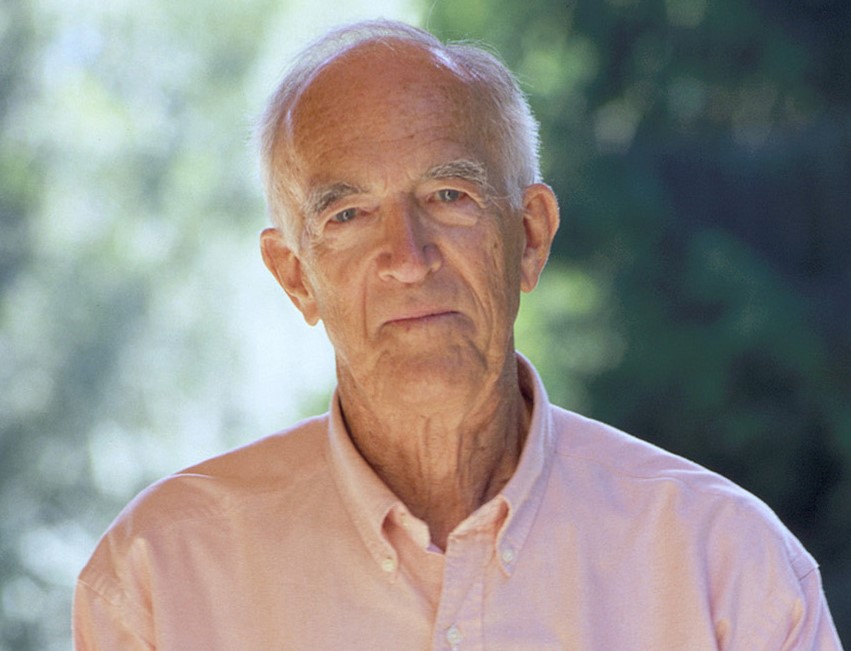
There had been talk of a performing arts complex in Sydney for decades, and the years after World War II saw Australia’s economy boom, paving the way for a building of this type. In this heady moment, the Opera House would become — in the words of architectural historian Philip Drew — a symbol of the transformation from “an older British Australia that was in decline, to an increasingly diverse European multi-cultural Australia” (Sydney Opera House: Jørn Utzon. London: Phaidon Press Ltd., 1995).
The key supporters of the project were a pair of opposites: Sir Eugene Goossens, the charismatic English conductor of the Sydney Symphony Orchestra, who had long argued for the need for a purpose-built performance space, and down-to-earth New South Wales Premier Joe Cahill, who architectural curator Anne Watson described in a chapter of an anthology of essays she edited about the project as a “non-concertgoer from a working-class background” who nevertheless believed in an “old-fashioned Labor vision of a better future shared by all” (Building a Masterpiece: The Sydney Opera House. “An opera house for Sydney: genesis and conclusion of a competition,” Sydney: Powerhouse Publishing, 2006).
At a conference in 1954, Cahill declared the state’s interest in developing a venue that would support and showcase the arts as they deserved — an edifice that would be a credit to Sydney. In May 1955, a committee from the Royal Australian Institute of Architects selected the tiny peninsula of Bennelong Point — with its commanding views of Sydney Harbour — for the new structure. By February 1956, the government of New South Wales announced an international design competition, in the hope of attracting some of the world’s best design talent and generating positive publicity for the project.
By the year-end deadline, Cahill’s competition had garnered 223 entries from 28 countries. One of the last entries to arrive to Sydney — number 218 — was from a 38-year-old Danish architect named Jørn Utzon. All the competition proposals were displayed at the Art Gallery of New South Wales (formerly the National Art Gallery), and four judges, a mix of modernists and conservatives, set to work on picking the winner.
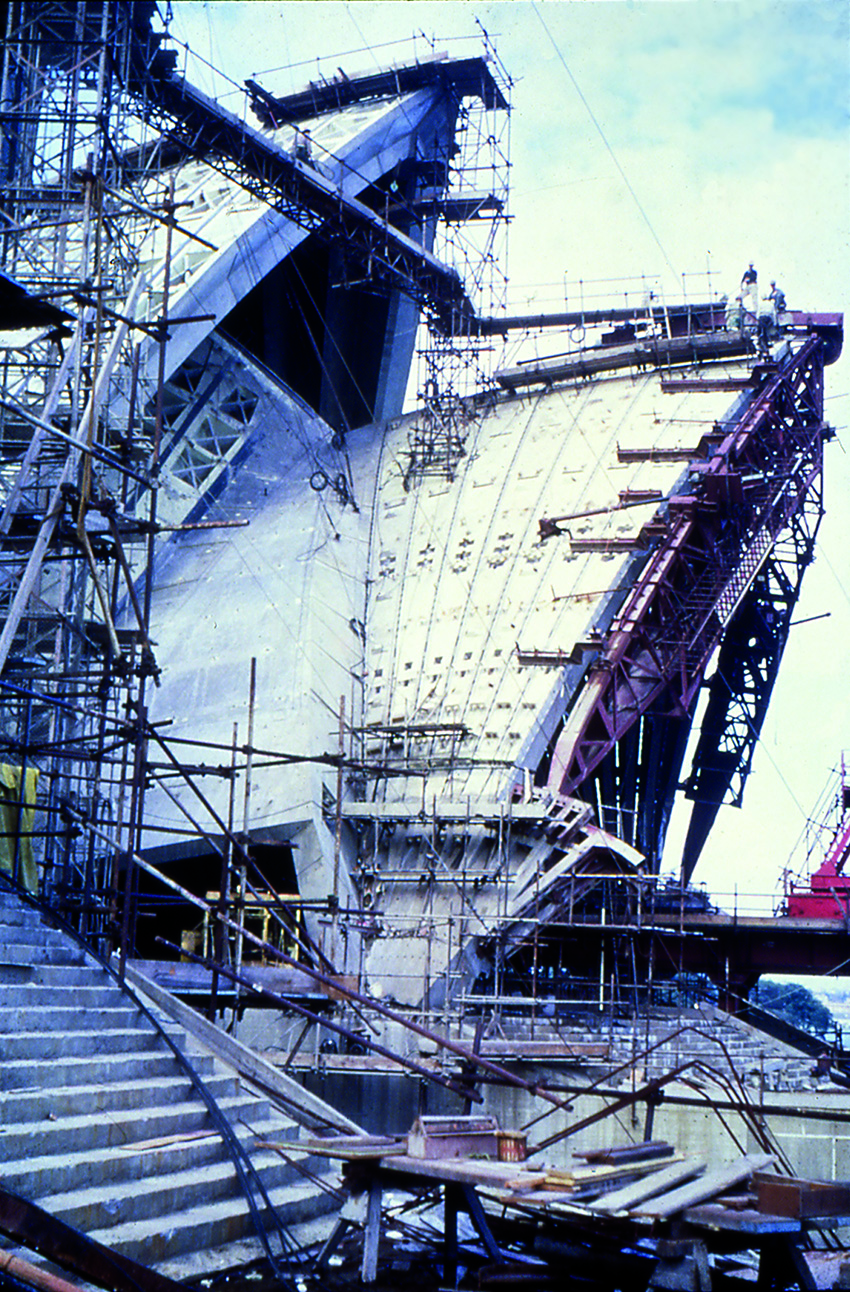
Per the Opera House’s website, there’s an apocryphal story of how Utzon’s design was chosen. Three of the four judges — Englishman H. Ingram Ashworth, the architecture chair at Sydney University; J. Leslie Martin, an English architect who was part of the design team for London’s modern Royal Festival Hall; and Cobden Parkes, the government architect for New South Wales — had initially discarded Utzon’s plan. The fourth (and most prominent) judge, the Finnish-American Eero Saarinen, who had arrived to Sydney late, quickly pulled Utzon’s design from the rejected pile and championed it.
But other accounts suggest that Martin also saw the promise of the design early. Still, it is likely that Saarinen championed Utzon’s soaring expressive forms in part because they were similar to his own birdlike TWA terminal at John F. Kennedy Airport in New York City, reports the website.
Cahill announced that Utzon won the competition on Jan. 29, 1957. “We have returned again and again to the study of these drawings,” the judges wrote in their report of Utzon’s design, explains the website, “and are convinced that they present a concept of an Opera House which is capable of becoming one of the great buildings of the world.”
According to Watson, Ashworth wrote to Utzon a month after he had won the competition and warned him: “The strongest opposition comes from political circles and I feel is not so much opposition to your schemes so much as opposition to the idea of building an opera house at all at this juncture.”
The architect would ultimately face plenty of opposition, but the first and biggest challenge was simply this: No one, including Utzon, was sure the structure could be built. But help was coming. Engineer Ove Arup had read about the winning entry while in London and wrote Utzon, praising his design and suggesting he consider employing his firm, Ove Arup & Partners.
Right away Arup acknowledged the difficulties: “So far as I can see, it would not be easy to calculate and detail your plans so as to give justice to your ideas with full clarity and still make them economically possible,” as detailed by Peter Murray in his book The Saga of Sydney Opera House (London: Spon Press, 2004). But Arup was confident his firm was the best for the job, and when the two met in London soon after, a deep friendship and working partnership quickly formed.
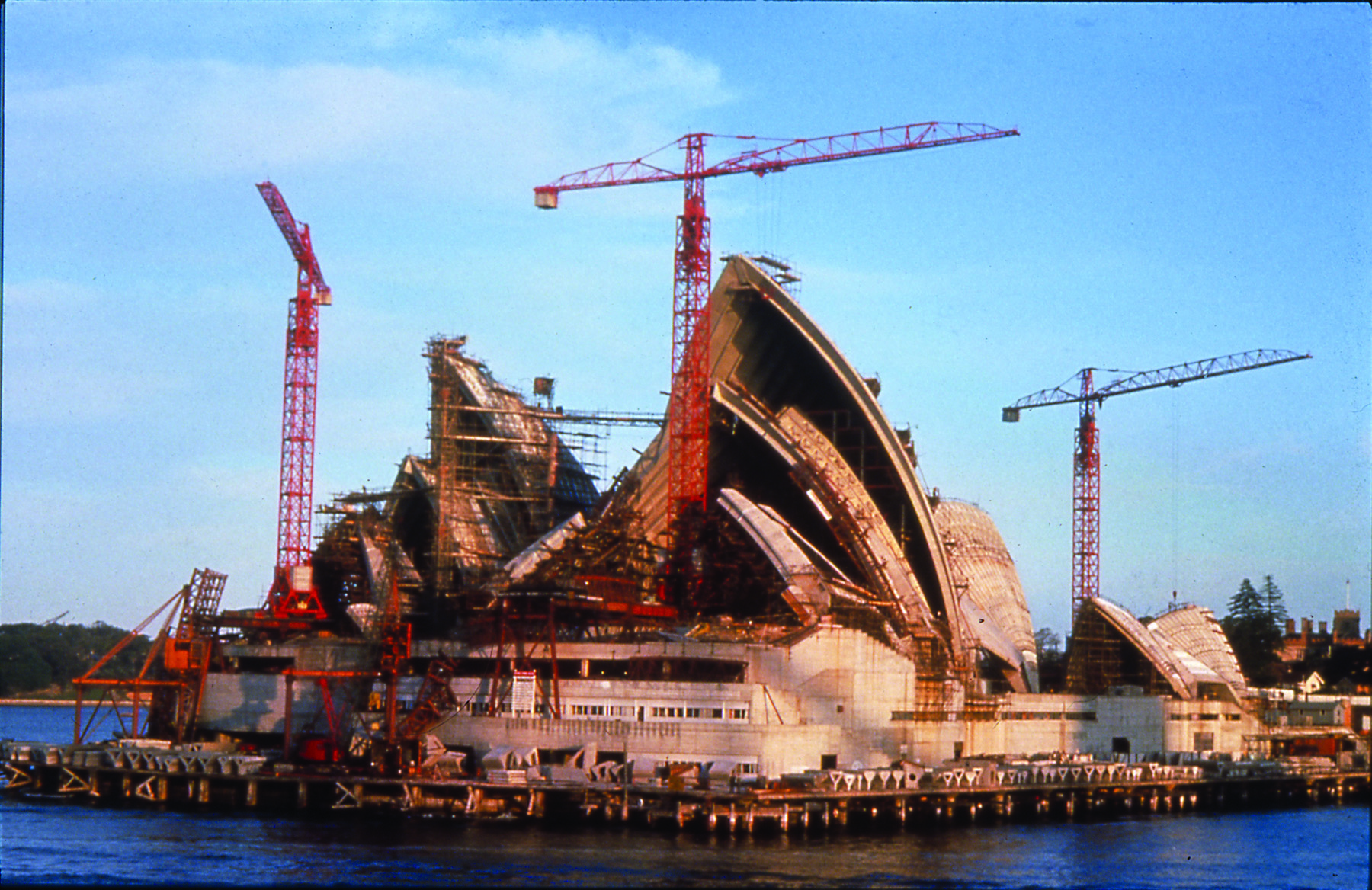
Arup engineers, working in London and later Sydney, and Utzon and a team of young architects, working in the seaside Danish town of Hellebæk (and also later in Sydney), set to work transforming Utzon’s wild vision into reality.
The Opera House’s theaters and floating shells sit atop a podium that measures 600 ft long by 394 ft wide. This was a pragmatic and deeply spiritual decision. Pragmatically speaking, Utzon wanted to separate back-of-house functions as well as mitigate the intrusive presence of the automobile on the pedestrian experience. “In the Sydney Opera House scheme, the idea has been to let the platform cut through like a knife and separate primary and secondary functions completely,” Utzon wrote in “Platforms and Plateaus. Ideas of a Danish Architect,” an article for Zodiac magazine (No. 10, 1962, pages 114-117). “On top of the platform the spectators receive the completed work of art and beneath the platform every preparation for it takes place.”
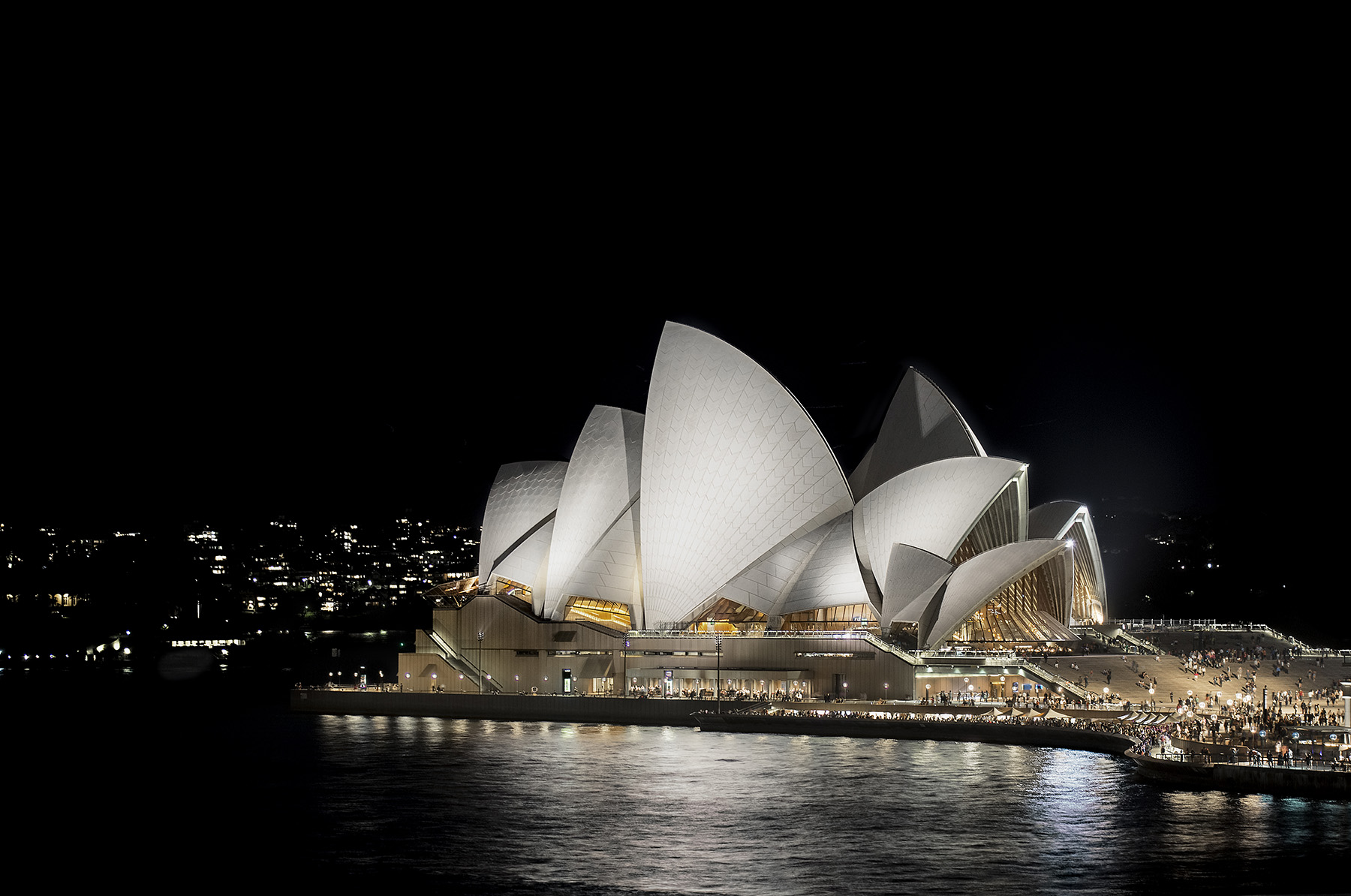
In the same essay, Utzon stated that the platform was inspired in part by the Mayan temples of the Yucatan Peninsula in Mexico. “On these high platforms — many of them as long as 100 metres — they built their temples,” he wrote. “They had from here the sky, the clouds and the breeze, and suddenly the jungle roof had been converted into a great open plain. By this architectural trick they had completely changed the landscape and supplied their visual life with a greatness corresponding to the greatness of their Gods.”
Construction began in March 1959 and covered three stages: the podium, the shells, and the interior. Immediately, engineers discovered that the geology of the site had been incorrectly surveyed, being made of “loose alluvial deposits permeated with seawater and completely unsuitable for bearing the weight of the intended structure,” states the website. To shore up the foundation, 700 steel-cased concrete shafts were bored into the northern half of the site and along the perimeter, and “mass concrete foundations filled in the unstable rock in the central area of the site.”
When construction of stage one finished in February 1963, the Opera House was already off the proposed schedule by two years. But the real challenges were just beginning. Utzon’s original forms for his shells were free form and individualized; Arup engineers needed to figure out a way to express them mathematically, so they could actually be fabricated and constructed.
“From freehand drawings Arup engineers explored what geometric order they could give to the shells,” wrote David Taffs, one-time head of Arup’s first computing department, in “Computers and the Opera House: pioneering a new technology,” a chapter in Watson’s anthology. “First they tried a series of paraboloids, but the forces and stresses looked too extreme. Then they tried ellipsoids.”
The engineering team developed 12 schemes before Utzon and Arup settled on a spherical solution, which allowed builders to mold repeatable building elements. “The appearance of the free-form roof was replicated closely, but the curvature throughout is constant,” wrote John Nutt, Ph.D., A.M., former chair of Ove Arup & Partners, in “Constructing a legacy: technological innovation and achievements,” a chapter in Watson’s anthology.
“Originally Arup proposed building the shells of quite thin reinforced concrete, poured in formwork on the site,” Taffs continued. However, Arup ultimately settled on a construction method for which the “shells would be precast in a single skin of concrete folded into a series of radiating triangular ribs.”
Computers also helped plan the erection sequence of the 2,194 precast concrete shell segments. In the introduction to the anthology, Watson noted that segments were cast at an on-site factory then “literally joined in the air, an unprecedented operation that required precise mathematical computer calculations.” This method also “initiated other technological innovations and ‘firsts’ — the ingenious telescoping erection arch devised to avoid the need for obstructive scaffolding, the first large-scale application in the construction industry of epoxy resin to bond the concrete rib segments together, and the use of the largest cranes in the world to manoeuvre the concrete segments into place.”
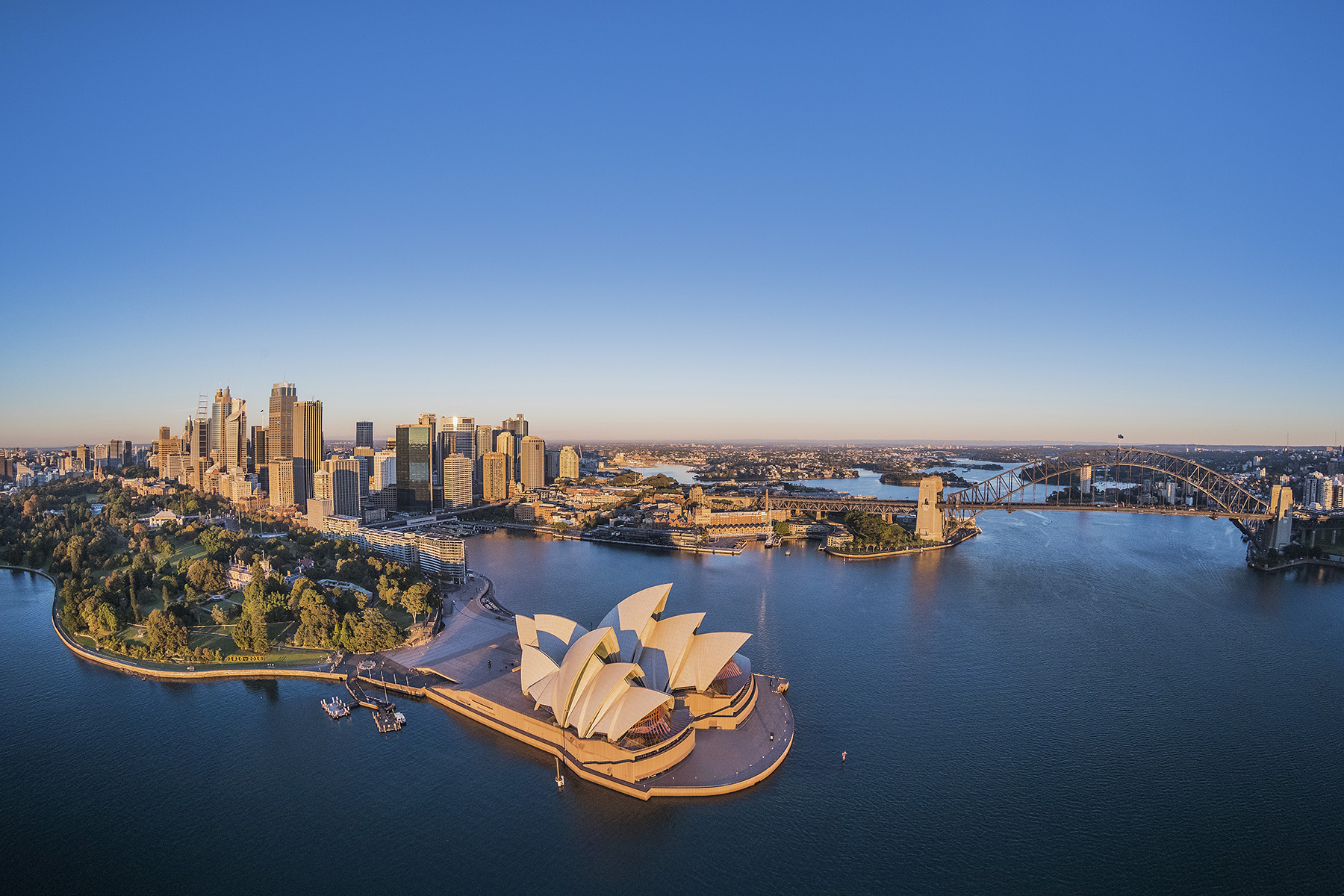
According to Taffs, Arup’s computer work through 1962 was the equivalent of 100 million labor hours if done manually, and by March 1967, the firm had put about 2,000 computer hours into engineering the roof.
In addition to the concrete, glass was also cut on-site. Utzon spent three years developing the shell tiles with Swedish manufacturer Höganäs. To mount the more than 1 million tiles across the twisting surface of the shells required, Nutt wrote, “sophisticated surveying techniques devised for this task, coupled with versatile adjustable fixing brackets,” which allowed tiles to be positioned to an accuracy of 3 mm.
Construction of the shells began in 1963 and continued for the next three years. But costs were rising — nearly quadrupling from 1959 to 1962. Government oversight (or meddling) in Utzon’s work grew. And relations became strained between Utzon and Arup & Partners over Utzon’s ability to produce all the interior drawings needed for the project’s third and final construction phase.
In 1966, Utzon clashed with Davis Hughes, the government official in charge of the project in the mid-1960s, over outstanding fees. Besides the issue of money, Utzon insisted he could not complete drawings for the interiors until he had done extensive prototyping of plywood, his planned interior material. When the government refused to pay his fees, Utzon resigned, feeling as if he had been pushed out.
Though Utzon’s departure set off waves of protest — letters, a petition, and even an actual march through Sydney — the project continued without him, per the website. And Utzon himself believed he would be called back in a few years, but it was not meant to be. In a further indignity, Ove Arup stayed on too, which left Utzon feeling betrayed and led to the deterioration of the architect’s friendship with the famed engineer. Architect Peter Hall replaced Utzon and completed the interior work on the Opera House.
The Sydney Opera House opened on Oct. 20, 1973, and although Utzon was invited to the opening ceremonies, he chose not to attend. But by the 1990s, a rapprochement was at hand. In 1999, Utzon was invited back by the Sydney Opera House Trust to create a new set of design principles to guide future development and maintenance of the Opera House — potentially for centuries. Utzon accepted but was too frail to travel to Australia. Amazingly, he never returned to Australia to see his finished work in person.
In 2004, the reception hall was redesigned by Utzon and renamed for him, and in 2006, he oversaw the addition of a colonnade on the western side of the building, along with a series of glass windows and doors that open up views from inside the Opera House foyer to Sydney Harbour, according to the website.
Utzon received the Pritzker Architecture Prize in 2003 and died in 2008.
In the last few years, the Opera House has embarked on an AU$275 million overhaul (about US$190 million) that will install a new stage as well as acoustical, lighting, and visual effects enhancements.
In a modern world of value engineering, the Sydney Opera House represents the necessity of the engineer’s art and the value of its service to structures that are larger than life. “What has endeared it to the city and to countless visitors from around the world,” wrote architecture professor Richard Weston in a chapter titled “Monumental appeal: reflections on the Sydney Opera House” in Watson’s anthology, “depends crucially on the supremely ‘unnecessary’ grandeur of the platform and shells, in whose presence — such is the power of great architecture — we feel more fully alive.”
In a dedication ceremony on April 6, ASCE named the Sydney Opera House as a Historic Civil Engineering Landmark, the sixth project in Australia to earn this distinction.
T.R. Witcher is a contributing editor to Civil Engineering.
This article first appeared in the September/October issue of Civil Engineering as “Hitting All the Notes.”



